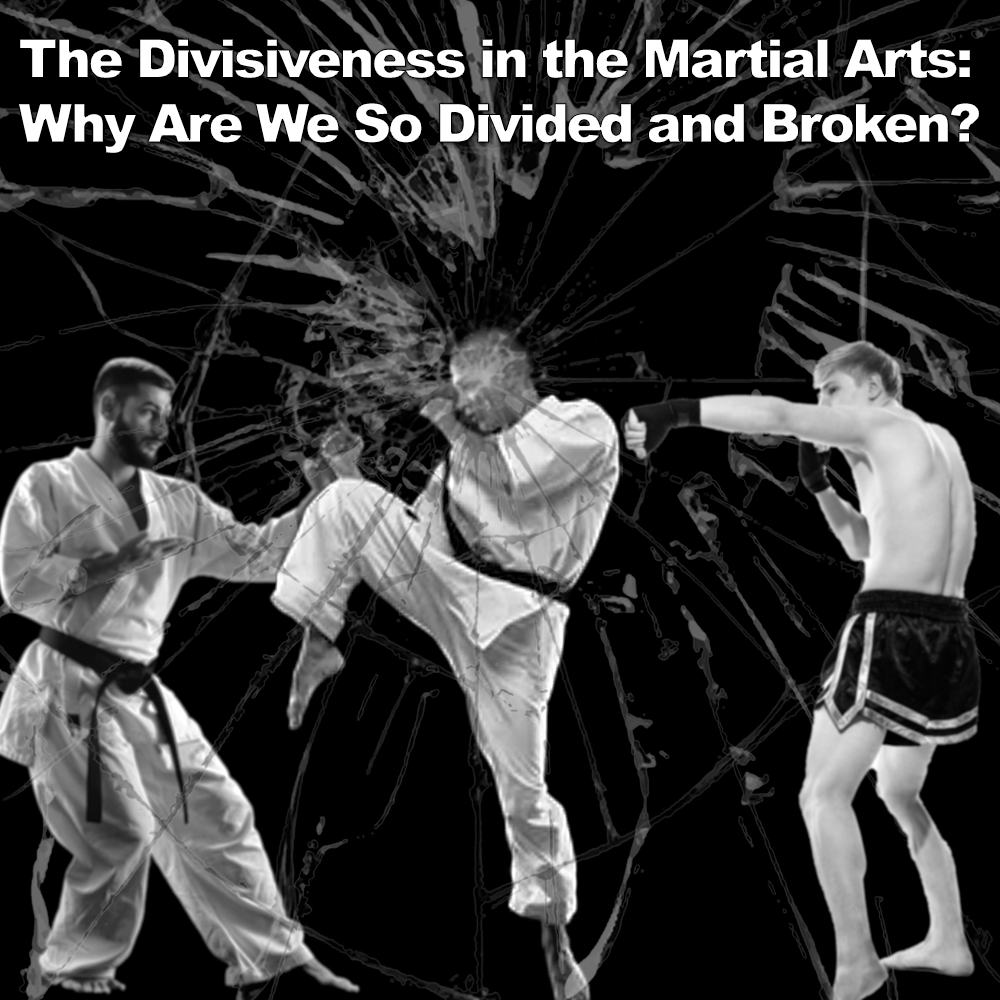
The Divisiveness in the Martial Arts: Why Are We So Divided and Broken?
Posted by ADAM CARTER on SEP 13, 2024

The Divisiveness in the Martial Arts: Why Are We So Divided and Broken?
(Approx 1 minute 50 second read)
Why, in a discipline meant to promote humility, respect, and self-discipline, do we find ourselves so divided and broken?
Perhaps it stems from the loyalty practitioners develop toward their chosen style, instructor, or dojo. While this sense of belonging is a powerful motivator, it can easily transform into tribalism, where your style is seen as superior to others. Instead of viewing different arts as offering complementary perspectives, you start believing there’s a “best” or “ultimate” martial art (see recent article).
This mindset creates a divide and rather than fostering curiosity and learning, practitioners sometimes feel they must defend their style at all costs. This defensive attitude just seems to create rifts.
Another forceful comment this morning: ‘Karate is c**p and doesn’t work’ (again). I think he was trying to promote his ‘come and choke each other out’ style – which was straight from his own advertising. Just pointless noise.
A major point of contention I see in the comments is between competition-focused arts and self-defense-focused systems. Arts like Sport Karate, Taekwondo, BJJ, and MMA thrive and excel in the sporting environment. But many of their practices may not translate directly to self-defense scenarios. That’s okay, they are sports. Context again.
Misunderstandings also arise when practitioners don’t fully grasp their own art, let alone others. The martial arts encompass multiple dimensions – striking, grappling, joint locks, throws – but students may focus on only one aspect, leading to a fragmented understanding of combat. This narrow focus fuels stereotypes, where one art is seen as “just striking” or “just grappling”.
For example, karate is often viewed as purely striking, yet classical karate (referring to karate before it moved to the Japanese mainland) includes close-range techniques, joint locks, and throws. This incomplete understanding of the art’s true capabilities often leads to its dismissal.
It’s crucial for people to understand the history behind any martial art, as it shapes how we view and practice these systems today.
A big ego also plays a significant role in divisiveness. When martial artists become tied to their rank, title, or accomplishments, they resist criticism or different concepts, creating even more friction.
Despite these divides, one truth should unite all practitioners: each style offers unique insights and lessons.
Instead of focusing on what separates us, we should ask, ‘What can I learn from others?’ The moment we stop comparing and start learning, we open ourselves up to a deeper understanding, breaking down the barriers that keep us apart. Then maybe the fools creating division and pointless arguments will finally fade into the background, where they belong.
Written by AC.
